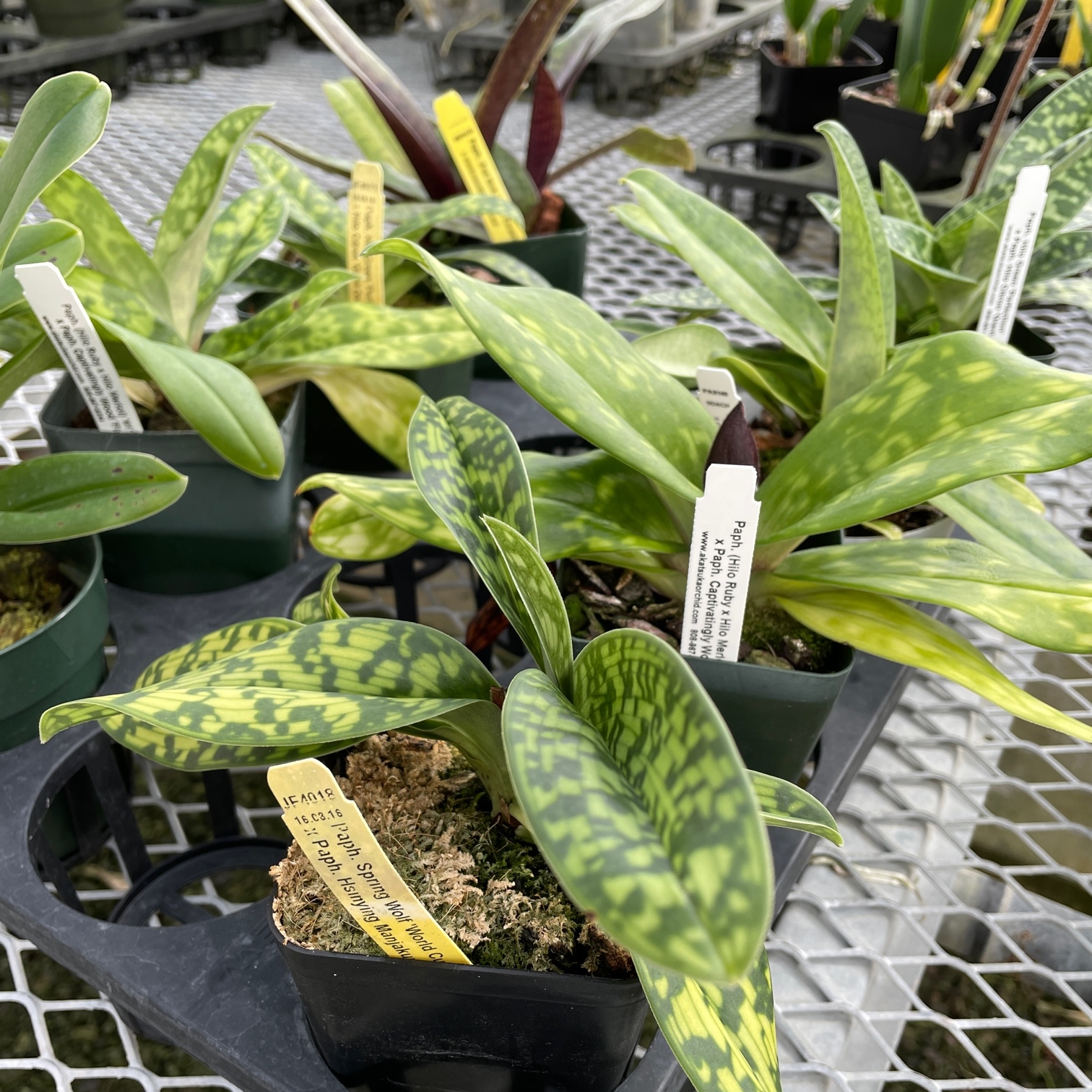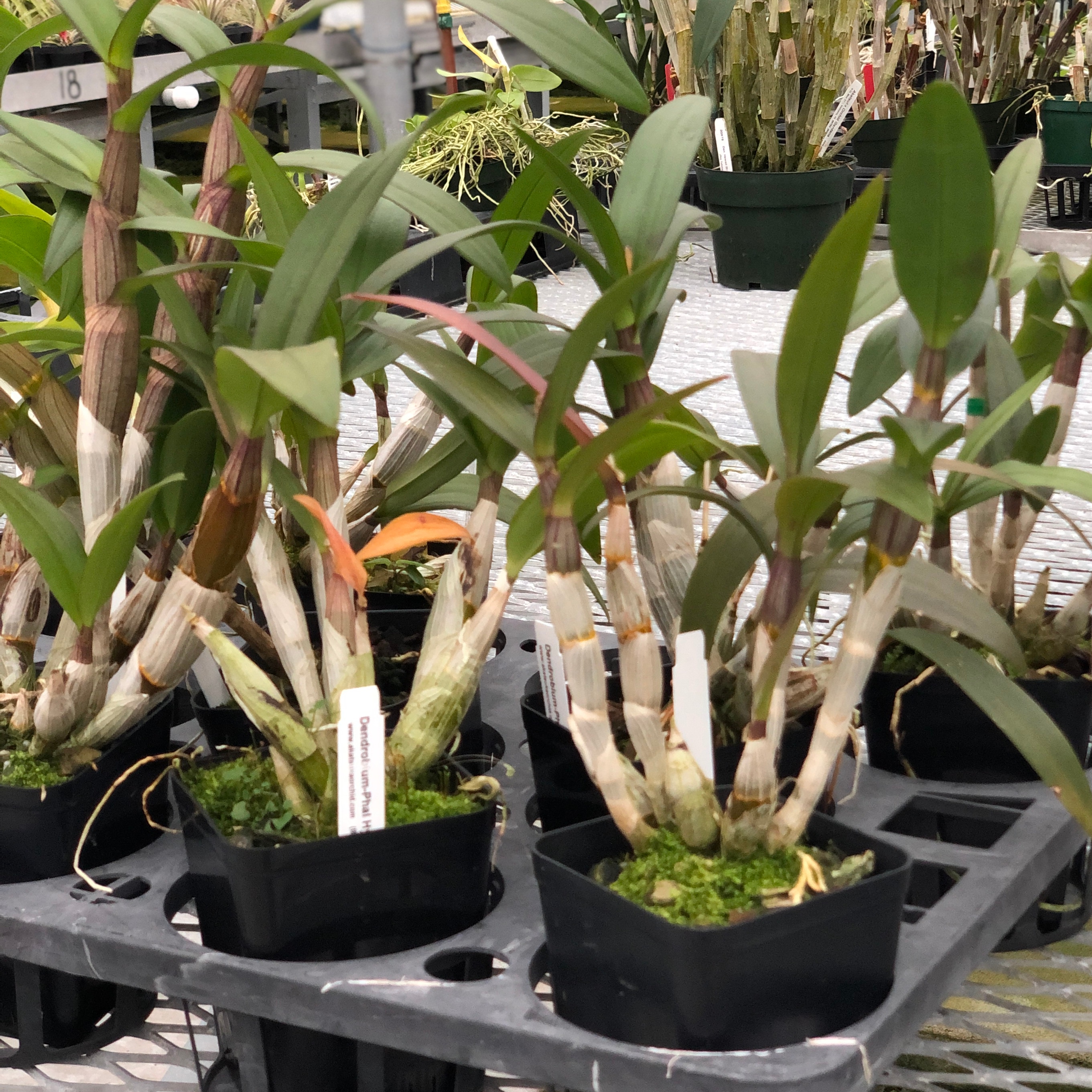
Types of Orchids: How to ID Orchid Plants (without flowers)
Posted by Kamaile O. on Nov 8th 2023
No matter where you are in the world, I can almost guarantee that whenever you go out to shop, whether for garden supplies, home improvement, or even for groceries, you’ll likely come across an orchid plant (many of which are selling without a name tag).
As a collector or hobby grower, it’s always exciting to see the vast array of varieties available today. But as a beginner, it can sometimes be difficult to identify or, at the very least, classify what hidden gems we’ve discovered, especially with over 750 genera of orchids recorded today. Of course, it’d be impossible to go through every single one in one blog post, but we’ll start with the most prevalent.
This is a beginner’s guide to identifying common orchid plants without flowers.

Cattleya
- Structure
- Sympodial
- Produce rhizomes
- Plant grows as slender Pseudobulbs (canes) that produce 1-2 thick and typically sturdy leaves but some hybrids can contain more leaves
- Dry sheaths become visible on each pseudobulb
- Aerial Roots
- Spikes
- Grow directly from crown
- Usually Short and soft
Phalaenopsis “Moth Orchid”

- Structure
- Broad rounded flat leaves
- Monopodial / Central Stem
- Leaves grow on the opposite side
- Thick aerial roots
- Spikes
- Grow from the base of the orchid, typically between flower leaves
- Stems are usually long and stiff
- Plentiful, rounded buds
Paphiopedilum “Lady Slipper” Orchid

- Structure
- Rounded flat leaves
- Leaves grow across from each other
- “Fan” like without a central stem
- No aerial roots (Terrestrial type)
- Spikes
- Grow from the crown
- Typically produce a single bud (sometimes sequential bloomers)
- As plants mature they can eventually produce multiple buds per spike
Dendrobium Phalaenopsis Orchid

- Structure
- Slender pseudobulb (cane) with nodes
- Leaves grow along the pseudobulb
- Spikes
- Long, thin, and stiff with multiple buds
- Grow from the crown and/or between the leaves
- Can sometimes rebloom from the same pseudobulb
Dendrobium (Honohono) Orchid
 Structure
Structure
- Long slender canes with many nodes
- Lots of thin, aerial roots
- Single leaves grow on each side of the nodes
- Deciduous type (will lose leaves prior to flowering)
- Spikes
- Extremely short spikes grow from the nodes (usually from where the leaves have dropped)
- Flower buds seem to almost grow directly from the nodes
Oncidium Orchid "Dancing Lady"

- Structure
- Sympodial
- Clumps of ovoid to conical pseudobulbs
- Each pseudobulb produces 1-3 leaves arising from the tips
- Leaves can get up to 2' long
- Spikes
- Grow from the base of the orchid, typically between leaves
- Long, usually branching, erect to arching inflorescences
- Many-flowered, usually bearing small to medium flowers
Odontoglossum Orchid

- Structure
- Sympodial
- Clumps of compressed, mostly ovoid pseudobulbs
- Each pseudobulb produces 1-3 leaves arising from the tips
- Leaves can get fairly long
- Spikes
- Grow from the base of the orchid, typically between leaves
- Long, usually branching, erect to arching inflorescences
- Many-flowered, usually bearing medium to large flowers
Cymbidium Orchid

- Structure
- Sympodial
- Clumps of compressed pseudobulbs
- Long, thin, ornamental leaves
- Spikes
- Grow from the base of the orchid, typically between leaf sets
- Long, impressive flower spikes
- Stem with numerous buds/blooms, usually in spiral shape
- Typically bearing medium to large flowers
Vanda

- Structure
- Monopodial, vertically along central rhizome
- Leaves grow in a ladder-like fashion to either side of the rhizome
- Usually thick and fleshy
- Long, thick aerial roots
- Spikes
- Grows between leaf sets
- Bumpy with pointed ends, possibly 3-4 tiny nodules
- Spikes usually produce 4-7 buds/blooms depending on size and maturity
- Typically bearing relatively large flowers
